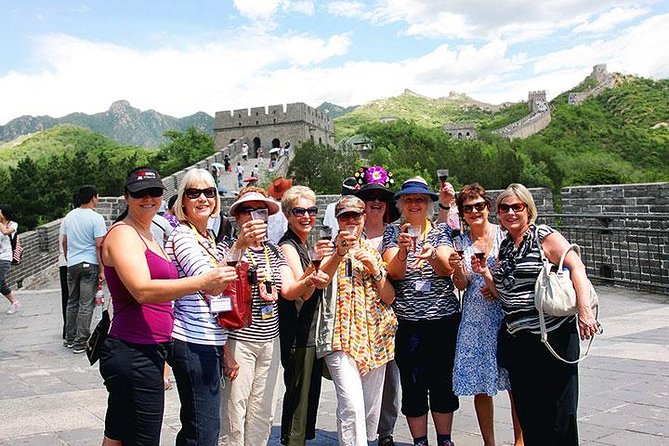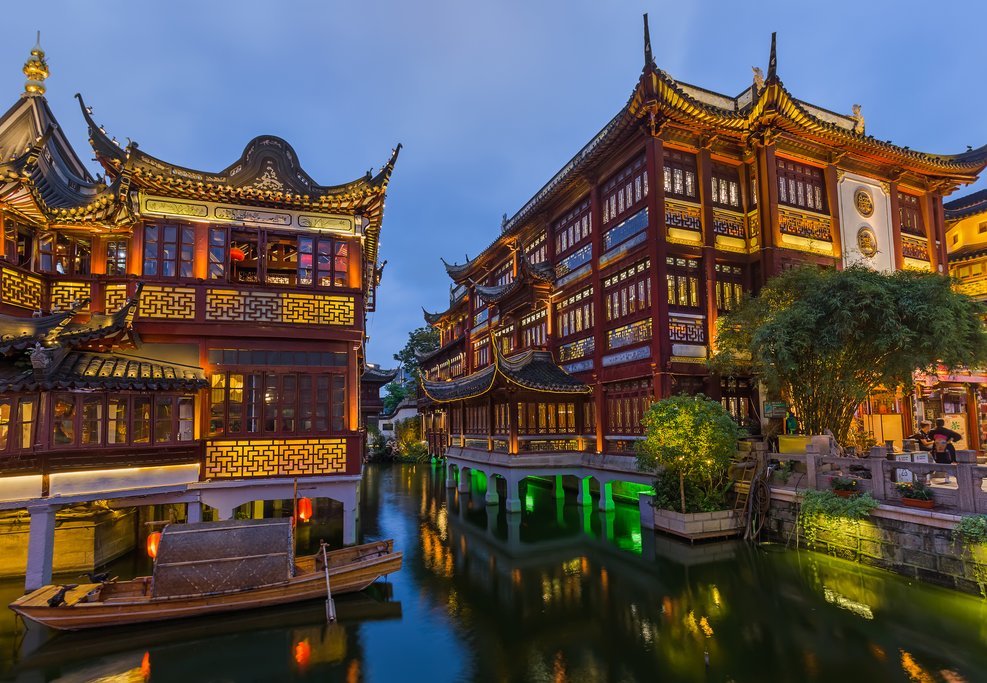1. Get familiar with the Eight Culinary traditions. Tip: Get familiar with the eight major Chinese dishes : Sichuan Cantonese Shandong Jiangsu Fujian Hunan Anhui Zhejiang. Each is distinct in its food items, tastes and cooking techniques.
It aids you in planning your dining experiences by studying your tastes.
Con: It's a challenge to keep track of the particulars of every cuisine.
2. Accept local specialties
You should try the cuisine of Chengdu, be it Peking Duck, Xiaolongbao, or Hot Pot in Chengdu.
Pro: You can have a rich cultural experience and authentic dining experiences.
Con: It can restrict your ability to try different cuisines within the region you're in.
3. Be aware of local flavors
Tips: Sichuan cuisine is spicy and numbing, Cantonese food is fresh and light, and Jiangsu dishes are sweet and delicate. Choose dishes according to your tolerance to spice and preference.
Pro helps you avoid eating out at restaurants that may not be suitable for your palate.
Con: Certain flavors are hard to master and might need a lot of testing.
4. Discover Street Food
Note the distinctive street food options available in each city. For instance there is Jianbing (savory hamburgers) in Xi'an) or Roujiamo(Chinese crepes)in Beijing. Explore the local cuisine and sample some foods.
Pros Street food is inexpensive convenient and provides an opportunity to see the daily life.
Con: Hygiene may be a problem in certain instances; select vendors that have high turnover.
5. Learn Basic Dining Etiquette
Tip - Understand Chinese eating traditions, like family sharing and not placing chopsticks vertically into rice.
Pro: It is a sign of respect for local customs and traditions, and improves your dining experience.
Con: It takes time to understand and adapt to unfamiliar etiquette.
6. Consult locals to get recommendations
Tip: Locals often know the top restaurants or food in their area. Don't be shy to ask for assistance.
Avoid tourist traps and uncover hidden treasures.
Con: Language barriers may cause communication to be difficult.
7. Be open to unfamiliar ingredients
Tip: Regional cuisines may feature unusual ingredients, like bamboo shoots, lotus root or smelly tofu. Foods that are new should be viewed with an open mind.
Pro: You'll learn to appreciate Chinese cuisine and broaden your palette.
Cons: You might not enjoy all of the food or you may have dietary limitations.
8. Allowing Dietary Restriction
Tip Tips: Use Mandarin to communicate food allergies and preferences.
Pro: A custom dining experience to suit your preferences.
Cons: Some cuisines have only a few options for accommodating certain dietary preferences.
9. Pair Food with Regional Drinks
You can try local drinks such as tea in Fujian or Baijiu in north China.
Pro: It adds depth and enhances the taste of food.
Con: Baijiu and other strong flavors might not be appropriate for everyone.
10. Avoid Overordering
Tips. Chinese dishes tend to be served family-style. Therefore, it is best to order with caution. You can always add more food if you wish.
Pros: Reduces food waste. It allows you to sample multiple recipes.
Con: You might be tempted by the temptation to purchase excessive quantities due to the variety.
Benefits of exploring regional cuisines in China
Explore a variety of flavors methods, ingredients and techniques.
Cultural Insights: Deepen your understanding of the regional identities and customs.
Cost-Effective - A lot of local meals are inexpensive.
Experience that will last a lifetime: The aroma of classic dishes at their original place can create memories that will last for a for a lifetime.
Cons of Exploring regional cuisines in China
Hygiene Concerns. Certain street food items or restaurants aren't likely to be up to international standards for cleanliness.
Language Barriers. The menus, as well as the explanations for products may only be available in Mandarin.
Unfamiliar ingredients: Some people may have difficulty with certain flavors or textures.
In some areas the strict vegetarians, people with food allergies, and vegans can have difficulties.
If you adhere to these guidelines and are a little adventurous then you'll be able to explore the variety of delicious regional Chinese cuisines while navigating the challenges. Read the top plan your trip to this location for site info including kweichow moutai the best and most famous liquor in china, zechawa valley tour route, popular beijing night markets, xiang cuisine.html, chaka salt lake, shopping in xi an, wang zhaojun one of the four beauties in ancient china, the color of dress in china, eating in dunhuang, chaka salt lake and more.

Top 10 Tips For Fees Photography Rules, And A Trip To Temples In China
1. Be Prepared to Pay Entrance FeesTip: Many famous Temples have a cost for entry, which can be anywhere between Y=20 to Y=200. Plan your trip in advance.
Pro: It assists you avoid surprises by helping you to determine the exact amount of cash for digital transactions or cash.
Con: Unexpected additional costs, like costs for exhibits can be encountered.
2. Bring cash or digital payment
It is possible to pay cash at temples or using well-known Chinese payment methods like WeChat Pay and Alipay.
Pro: Quick entry and payment with no delays.
Cons: Limited choices for foreigners unfamiliar with or unfamiliar with electronic payment applications.
3. Look for Photography Signs
It is always a good idea to check whether there are any notices on the walls that say what you're allowed to take photos. A lot of temples ban photography in holy places and around sacred artifacts.
Pro: Stops accidental infringement of rules or breaking the law.
Con: Some rules are different in certain areas of the temple. Paying extra attention is necessary.
4. Avoid Flash Photography
In places that allow you to take pictures, you should avoid using flash as this can cause damage to artifacts and disturb worshipers.
Pro: Helps preserve temple's art and the surrounding.
Low lighting can result in poor photos.
5. Respect the privacy and dignity of worshippers
Tips: Do not take pictures of people who are praying or participating in religious ceremonies unless you have their permission.
Pro: Shows the awareness of culture and respect for personal privacy.
Cons Limits your ability to capture temple atmosphere.
6. Follow Drone Restrictions
Tip: Generally drones aren't allowed in temples. Make sure you are aware of local laws before deciding to use an aerial shot.
Pro: Avoids fines or the confiscation of your drone.
Cons: The limited number of angles for photography can make it difficult to create distinctive shots.
7. Be prepared for additional fees
There is a possibility of being charged additional by certain temples for permission to take photos, particularly when you use professional equipment such as DSLRs or tripods.
Pro: You can create legal high-quality photographs.
Con: Adds to the overall cost of a trip.
8. Dress in a modest manner
Tips: Proper attire is crucial when visiting temples. Inappropriate clothing could result in being denied entry or a refusing entry.
Pro: It displays respect for the religion and assists you in blending with the crowd.
Con: Extra preparation may be needed, especially during the summer heat.
9. Avoid the crowds in photo shoots
Tips Beware of crowds by going early in the morning or in the late afternoon. It is much easier to take unobstructed pictures.
Enhances your photographs and experiences.
Cons: It could be difficult to adjust your schedule.
10. When in Doubt, ask for permission
Ask temple staff and signs regarding rules when you're in doubt.
Pro: This helps you avoid mistakes.
Con: Language barriers might make communication difficult.
Follow Fees and Photographic Rules
Respect the diversity of cultures:
Artifact Preservation: Guards fragile artwork and structures from destruction.
Positive Experiences Beware of confrontations with temple personnel or worshippers.
Legal Compliance: Protects against fines or penalties if you violate the rules of photography.
Cons of Keeping Fees and Photography Rules
More Costs: The cost of additional fees for entry or photography permits could add up.
Limited Creativity: Restrictions may prevent you from capturing that perfect photo.
Language Barriers.
It takes more time and effort in preparing for the research project.
You can have a relaxing enjoyable, pleasant, and respectful visit to China's temples by following the rules and regulations. It will also help preserve their cultural and spiritual integrity. Take a look at the recommended find everything you need to know about this site for blog info including eating in lanzhou, wuxi a shining pearl of taihu lake, xi an travel tips, lijiang tour maps, jiuzhaigou, four great classical novels.html, litchi park, four gentlemen in chinese culture, shaoxing wine the best yellow wine in china, lijiang tour maps and more.
